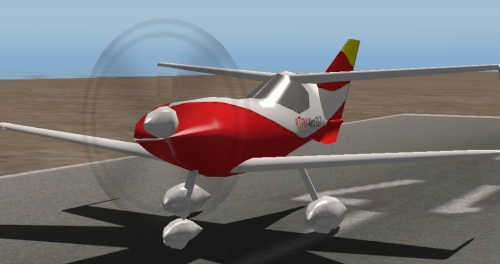|
|
|
|
United States, NY, Andover
Joined Nov 2015
41 Posts
|
|
|
|
|
|
||
|
|
Quote:
Ahh guilty.... I was just flying a .60 glow plane with 8611a's in it. Even the throttle servo. Just happened to 5 of them sitting there not doing anything. |
|
|
|
||
|
|
Quote:
Generally setting up the lengths so that the servo is always using as close to its full +/- 60degree travel regardless of the surface throw is ideal for maximizing both leverage and control resolution. Like others Ive even used bellcranks at time in scale builds. |
|
|
|
||
|
|
Quote:
 My point about not recommending BLS172/DS8711/HS7950 class servos to new guys with their first 30cc is partially about avoiding useless overgkill - but I also do it so as not to scare off a newcomer telling them they need $1000 of servos in their first plane. |
|
|
|
|
|
Canada, ON
Joined Sep 2006
9 Posts
|
Back in the late 80s my 22 lb 62cc plane had 42 oz-in servos on each surface. Not much was available back then and I did not know better. I flew that plane for many hundred flights without a problem. There was probably a lot of blow down, but I wasn't flying precision aerobatics or 3D. I would not recommend that today, but many of the suggested torques seem to be over kill. I also find it strange that the manufactures have increased the suggested torques five fold, but strength of the structure that the servo is mounted to has not changed.
|
|
|
|
|
|
|
|
|
||
|
United States, TX, Spring
Joined Oct 2018
6 Posts
|
Quote:
|
|
|
|
||
|
|
Quote:
It was set up with 45degrees of throw on all surfaces and I tossed it around as hard is I could... |
|
|
|
|
|
|
nope..... we put way more servo in than we actually need. Also a servo that if stalled, wont smoke check or strip the gears is just as important as overall strength. I have been flying for over 40 years and have never had a 148 futaba fail... would i put one on my 3.3 carf yak. no. well wait there is one on the choke...
And for the original poster. Back in the day some friends of mine working on the guidance system for a very commonly used uav that is flown all over the world today used seikos on a varieze and also on another old homebuilt they bought to make the test flights to make sure the guidance and hi zoot satellite remote contrill would work. the backup radio was a bone stock futaba super 7 on ham band... For a manned setup you probably want a full disconnect on the servo system so you wouldn't have to overcome them if something locked up.. of course several experimental autopilot systems out there require you to overcome the servo when its not in use.. you aren't treading any new ground other than hanging your butt out there to use an rc transmitter.. but wait you aren't... the navy used to make safety pilots ride along when training early drone operators back in the 50s. course then it was somebody elses butt hanging out as the operator was on the ground... |
|
|
|
|
Joined Nov 2020
1 Posts
|
Estimating Torque
Mass of air 1.2kg/m2, multiply by area of Aileron in m2 than multiply by speed of airplane in m/sec.
Than the result is to select capacity (in Kg) of Servo. I note average 300kg. In market servo usualy maximum 150kg, but can modified by ratio mechanism system to reach 300kg. I asumed area of Aileron 20cm x 4m. But actually I used 135kg work well enough |
«
Previous Thread
|
Next Thread
»
| Currently Active Users Viewing This Thread: 1 (0 members and 1 guests) | |
| Thread Tools | |
 Similar Threads
Similar Threads
|
|||||
| Category | Thread | Thread Starter | Forum | Replies | Last Post |
| Chinn yak profile kit | yellowman2513 | Nitro Power | 43 | 03-08-2009 11:20 AM | |






